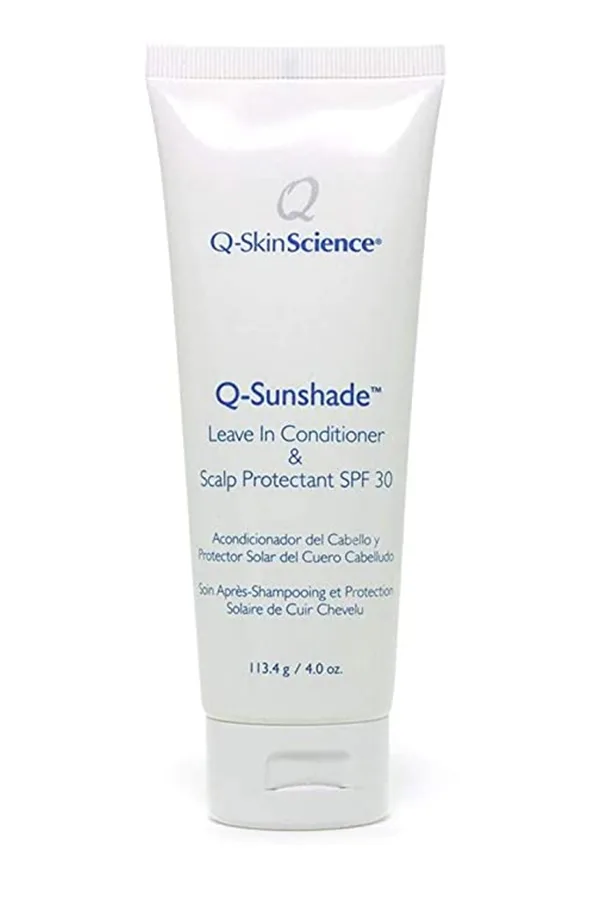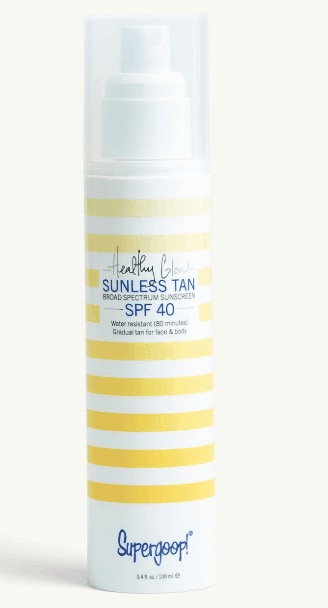By now, we’ve all wised up enough to know everyday sunscreen is a beauty essential. Being healthy is the new being bronze and that doesn’t just mean in the summer. Protecting your skin year ’round is the best way to guarantee it’s glowing in the right way — that is, preserving it while combating the risk of serious trouble down the road. That serious trouble ranges from damage to your skin’s moisture barrier to premature aging to skin cancer. And while early onset of wrinkles might sound like the worst thing ever, skin cancer could actually kill you.
How does sun exposure damage skin?
Sun damage to your skin is caused by exposure to UV rays, more formally called UV radiation. There are two types of UV rays: UVA and UVB. According to the FDA, UVB rays cause sunburn, but both UVA and UVB rays are associated with skin cancer. And that means you could incur sun damage to your skin without the telltale sign of a sunburn. Scary, right?
Beverly Hills cosmetic surgeon William J. Binder, M.D., who specializes in removing cancerous lesions, broke down the most common types of skin cancers for us.
- Basal cell carcinomas (BCC) represent 80% of skin cancer cases. BCC is a tumor that develops in the epithelial tissue just below the skin. Women over the age of 50 and white-skinned individuals are particularly prone to BCC. This type of tumor is less likely to spread to other areas of the body.
- Squamous cell carcinomas (SCCs) develop on the top layer of the skin. These lesions can spread quickly.
- Melanoma is the mutation of cells called melanocytes. It appears as a mole or dark patch on the skin, but it won’t stay there if left untreated. Melanoma can spread from the skin to other vital organs.
Dr. Binder says that UV exposure is responsible for 99% of non-melanoma cancers and 95% of non-melanomas.
What to look for in a sunscreen
The FDA recommends broad-spectrum sunscreens only, since these protect against both UVA and UVB rays. A sunscreen that’s labeled as broad spectrum meets the FDA’s broad spectrum requirements. On the other hand, sunscreens that are not described as broad spectrum may only offer UVB protection. That’ll keep you from getting sunburned, but you’ll still be at risk of over-exposure to cancer-causing UVA rays. Know that in 2019, the FDA issued a statement that only two active ingredients — zinc oxide and titanium dioxide — are generally recognized as safe and effective for sun protection.
You should also know that FDA guidelines prohibit suncreens from claiming they provide instant protection or are waterproof or sweatproof. Rather, the product should advise you to apply it 20 to 30 minutes prior to exposure and should refer to its longevity under water as water-resistance or sweat-resistance. Pay attention to the time period of water-resistance; this is how long you can expect to receive the SPF protection on the label while you are swimming or sweating.
Finally, the FDA recommends at least SPF 15 as part of your daily skincare routine. Dr. Binder advises SPF 30 or higher when you’ll be out in the sun. Even with those SPF levels, you should stick the shade whenever possible. If direct sun exposure is unavoidable, add a broad-rimmed hat and oversized sunglasses — a fabulous style move that keeps the wrinkles and cancers at bay.
How to use sunscreens
Did you know that most people don’t apply enough sunscreen to get the SPF protection level that’s on the label? It’s true. If you’re squeezing out a drop of that SPF moisturizer and smoothing over your whole face each morning, you may be cutting your SPF protection in half. So, step one of using sunscreen properly is to apply it generously.
If you don’t like the feel of it a thick layer of suncreen on your face, try a new product. Now’s the time to thank the beach gods that you’re no longer limited to classic zinc on the nose or even the streaky white lotion counterparts that came shortly after. Personally, I like SPF RX SPF 50 Daily Skin Hydrator with zinc oxide.
After you’ve applied your sunscreen generously, plan on reapplying every two hours you’re outside, or more often if you are swimming or exercising.
Sun protection to try now
Today’s best sunscreen isn’t just one product. It comes in all forms and functions, which means incorporating sun protection into your regular routine is easy. For the paranoid to the picky, there’s a face, body, and even hair solution to keep the sun’s warm rays from taking their toll on your gorgeous skin.
Best for hair and scalp
Products that do double-duty are convenient and friendly to the budget. This broad-spectrum formula is a leave-in conditioner that seals and protects your locks, while giving hair and scalp protection from the sun. Safe for color-treated hair and formulated with silk proteins, green tea extract and natural oils, this conditioner may be in your rotation even when the sun doesn’t shine.
Sunscreens for the girl on the go
For ladies who don’t have sunscreen in their moisturizer and foundation, or for those who like to reapply throughout the day, brush-on powder formulas are an effortless way to protect the face. This one is powered by titanium dioxide and zinc oxide. Stash one of these babies in your purse and you’re always prepared for the impromptu picnic. Power users can dab this block on the part for head protection too!
Another option that’s perfect for moms and their kids is a box of travel-sized sunscreens. Each single-use packet is designed to cover your legs, arms and face. (You will need to double-up if you’re wearing a bikini.) Stash these in your beach tote for water- and sweat-resistant sun protection for you and your family.
Best sunblock for the pale
Spray on this scentless formula for sun protection and a buildable, self-tanning color from Supergoop. Your color will begin to develop in about two hours — if you’re at the beach, you might be tempted to let your friends think your gradual tan is natural.
Best spray sunscreen
If greasy fingers and palms are enough to keep you indoors, go for a no-rub-necessary spray. The finer the mist, the better. Neutrogena’s Ultra Sheer Body Mist routinely gets strong reviews for the lightweight formula that absorbs instantly — delivering UVA/UVB protection that’s water resistant and oil-free. The spray works at any angle too, so you don’t have to ask strangers to apply sunscreen on your back (unless that’s your go-to conversation starter, that is).





